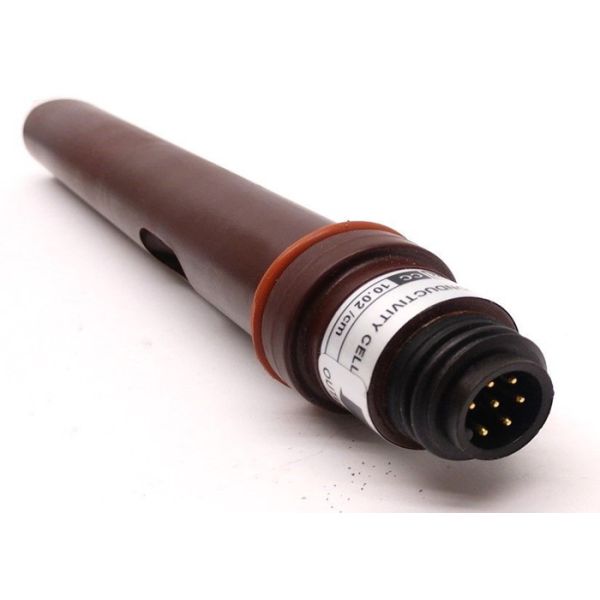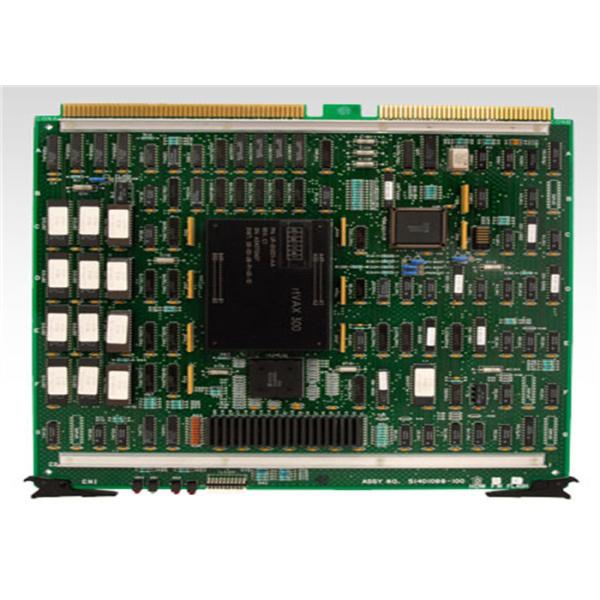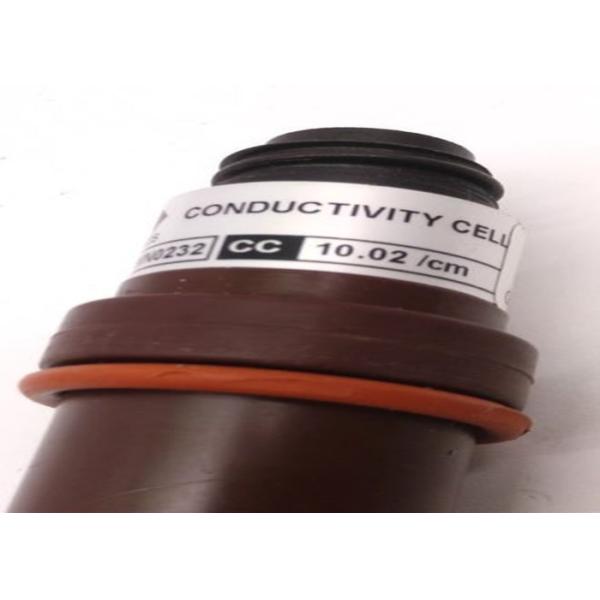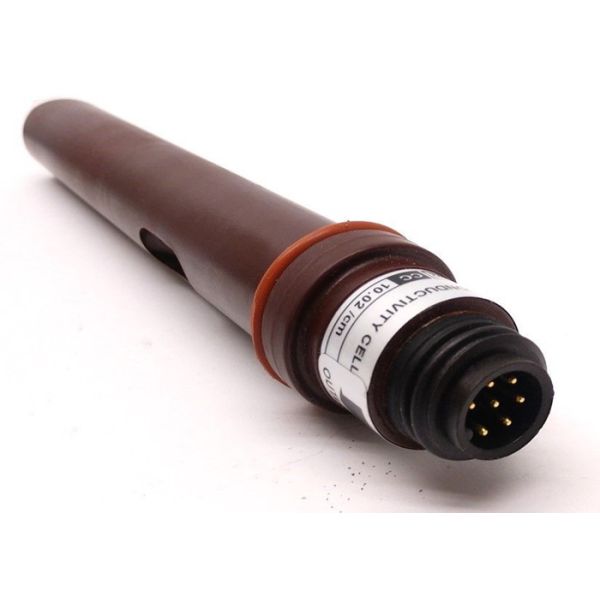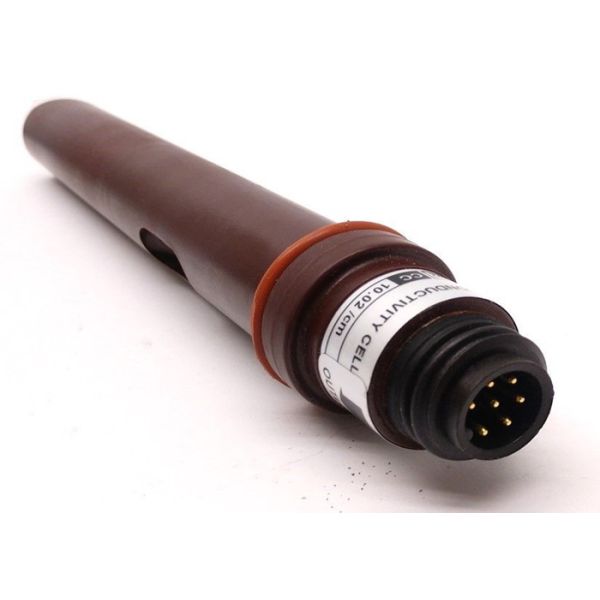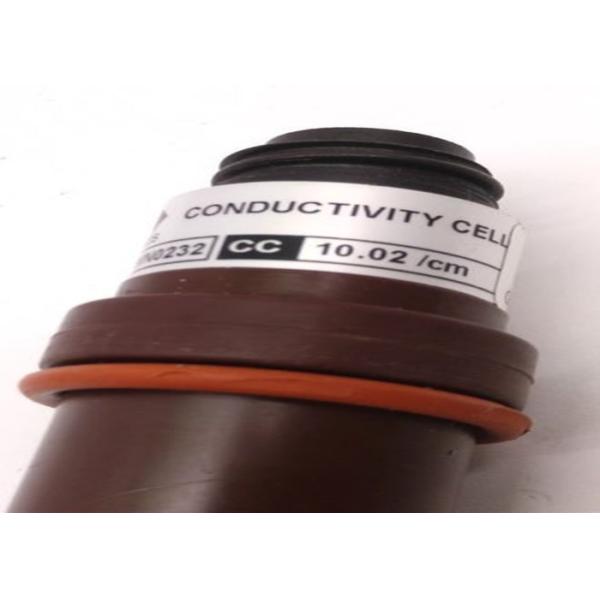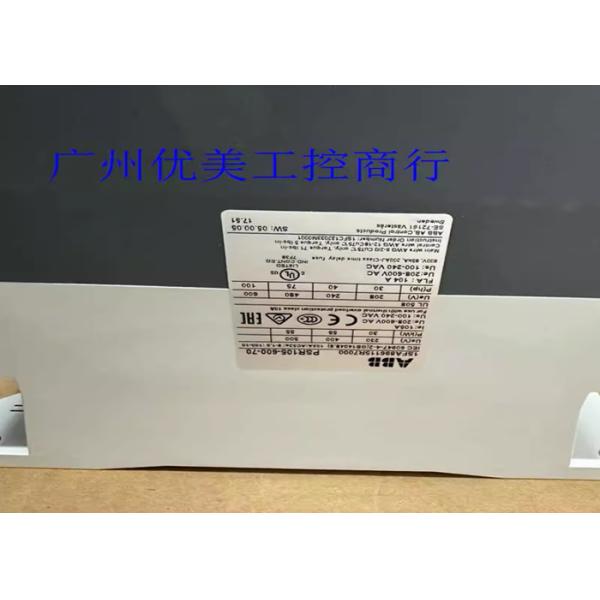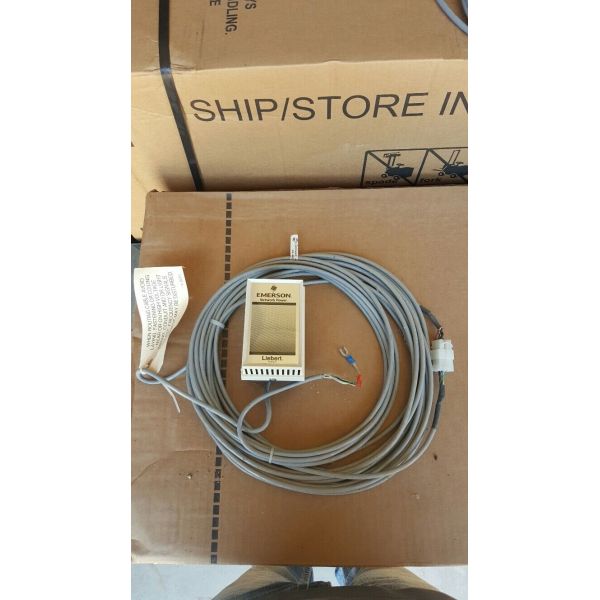Product Description:UNI2401
-
Measurement and Control:
- Pressure, temperature, flow, or level measurement for real-time process monitoring and control.
- Advanced sensors and signal conditioning for accurate and reliable data collection.
-
Modular and Scalable:
- A modular design to facilitate easy expansion or customization for different process requirements.
- Designed for seamless integration with Distributed Control Systems (DCS), Programmable Logic Controllers (PLC), and SCADA systems.
-
Communication Protocols:
- Modbus RTU, HART, Foundation Fieldbus, or Ethernet/IP to support efficient communication and integration with existing automation systems.
- Real-time data transmission and diagnostics to improve system visibility and decision-making.
-
Robust Environmental Design:
- Built to withstand demanding environments with IP65 or IP67 ratings for protection against dust and water ingress.
- Suitable for use in hazardous locations, with ATEX or IECEx certifications for use in explosive environments (depending on the application).
-
Power Supply:
- 24V DC or AC supply, ensuring compatibility with most industrial automation systems.
- Low power consumption for extended operation in remote or energy-sensitive applications.
-
High Accuracy and Reliability:
- Designed for high-precision measurements in critical control applications.
- Emerson products are known for their long lifespan, minimal maintenance needs, and high reliability under challenging conditions.
-
Diagnostics and Remote Monitoring:
- Self-diagnostic capabilities to ensure reliable operation and easy troubleshooting.
- AMS Suite or other Emerson diagnostic tools may be supported for remote monitoring, calibration, and predictive maintenance.
Features:UNI2401
-
Wide Compatibility with Automation Systems
- Protocol Support: Likely supports Modbus RTU, HART, Foundation Fieldbus, and Ethernet/IP protocols for easy integration into existing PLC (Programmable Logic Controller), DCS (Distributed Control Systems), and SCADA systems.
- Flexible I/O Options: Configurable analog and digital I/O for various sensor and actuator connections, providing a broad range of capabilities depending on the application.
-
2. High Accuracy and Precision
- Measurement Accuracy: High-precision measurements for pressure, temperature, flow, or level, ensuring reliable and repeatable performance. Typical accuracy for Emerson products ranges from ±0.05% to ±0.5% of full scale, depending on the sensor type.
- Wide Measurement Range: Supports a wide range of inputs for different process variables (e.g., 0-500 psi for pressure or -50°C to 500°C for temperature).
-
3. Robust Industrial Design
- Environmental Protection: Likely features an IP65 or IP67 rating, making it dustproof and waterproof, suitable for both indoor and outdoor applications.
- Wide Operating Temperature Range: Suitable for harsh environments, potentially offering an operating range of -40°C to +85°C or more, depending on the application.
-
4. Self-Diagnostics and Monitoring
- Built-in Diagnostics: Continuous self-monitoring of key parameters such as signal integrity, sensor health, and system performance. This helps detect faults and potential issues before they affect operations.
- Real-time Monitoring: Remote diagnostics capabilities via integration with Emerson’s AMS Suite or other software tools, offering features like predictive maintenance and status alerts.
-
5. Ease of Integration and Configuration
- Plug-and-Play Operation: Simple installation with easy configuration and calibration. Emerson devices often feature HART communication or software tools that make integration straightforward.
- Modular Design: Potentially a modular device, enabling flexible configurations based on application needs (e.g., additional I/O modules for expanded functionality).
- Intuitive User Interface: Equipped with LCD display or LED indicators for quick status checks and easy parameter adjustment.
-
6. Energy Efficiency
- Low Power Consumption: Optimized for energy efficiency with low power requirements (e.g., typically powered by 24V DC), ensuring long-term operation in remote or off-grid locations.
-
7. Customizable Outputs and Alarming
- Analog Outputs: Commonly, Emerson devices support 4-20 mA output, ideal for long-distance signal transmission in process control systems.
- Digital Alarming: Capabilities for alarm outputs when process variables exceed predefined thresholds, which can trigger safety actions or notify operators.
-
8. Safety Features and Certifications
- Explosion-Proof or Hazardous Area Certification: If the product is designed for use in potentially explosive environments, it could be ATEX or IECEx certified, ensuring safe operation in hazardous locations (e.g., Class I, Div 1 environments).
- Safety Integrity Levels (SIL): For safety-critical applications, the device may be rated for certain SIL levels to meet stringent safety requirements.
-
9. Advanced Communication and Control
- Remote Configuration and Calibration: Possibility for remote calibration and software-driven configuration, allowing operators to adjust settings and monitor performance without direct physical access to the device.
- Cloud Integration: With growing connectivity in industrial environments, cloud-based integration or edge computing capabilities might be included for data logging, analytics, and centralized monitoring.
-
10. Long-term Durability
- High-Quality Build: Typically designed to last in demanding environments, Emerson products often feature rugged construction with materials like stainless steel for corrosion resistance and vibration resistance for use in rough operational conditions.
- Long Service Life: Built for extended service life with minimal maintenance requirements, reducing overall operational costs and downtime.
- Process Control: Ideal for monitoring and controlling key process parameters in industries such as chemicals, pharmaceuticals, food and beverage, and oil and gas.
- Safety Instrumented Systems (SIS): Used to monitor safety-critical parameters and initiate emergency shutdowns if unsafe conditions are detected.
- Energy Management: In power generation or energy distribution, for real-time monitoring and control of boilers, turbines, and transformers.
- Flow Measurement: Suitable for monitoring flow rates in piping systems, chemical reactors, or water treatment processes.
- Temperature and Pressure Control: Commonly used in HVAC systems, temperature monitoring, and pressure regulation in process plants.
Technical Parameters:UNI2401
- Nominal Supply Voltage:
- Likely 24V DC (common for many industrial automation systems).
- Power Consumption:
- Low power requirements to support continuous operation, likely < 10W (depending on the device's functionality).
- Voltage Range:
- Possible input range: 10-30V DC for a variety of operational environments.
- Analog Inputs/Outputs:
- 4-20 mA analog input/output, which is common for process control devices.
- Voltage outputs (e.g., 0-10V) could be supported for certain applications.
- Digital Inputs/Outputs:
- Discrete inputs for binary (on/off) signals.
- Relay outputs or transistor outputs for controlling external devices.
- Signal Conditioning:
- May offer built-in signal conditioning to interface with various sensors (e.g., for temperature, pressure, flow measurements).
- Modbus RTU: A serial communication protocol often used in industrial devices for integration with PLCs and DCS systems.
- HART: For smart communication with field instruments, providing diagnostic and configuration capabilities.
- Foundation Fieldbus: If the device supports advanced integration into process automation networks.
- Ethernet/IP or PROFIBUS: Common for more modern, high-speed communication in complex systems.
- Operating Temperature Range:
- Likely between -40°C and +85°C to accommodate extreme environments in industrial settings.
- Storage Temperature Range:
- Typically -40°C to +85°C (same as operating range).
- Relative Humidity:
- Common range: 0% to 100% RH for devices designed to work in humid conditions (e.g., industrial plants).
- Ingress Protection (IP):
- Likely IP65 or IP67 rated, making it dustproof and waterproof, suitable for harsh environments.
- Vibration Resistance:
- Designed to meet IEC 60068-2-6 standards or similar, ensuring stability under vibration conditions.
- Pressure:
- For pressure measurement devices, the range might be anywhere from 0-500 psi or more, depending on the device.
- Temperature:
- The device may support temperature ranges from -50°C to +150°C or more, depending on its application (e.g., industrial control, HVAC, process systems).
- Flow:
- For flow meters, the device could measure from a few liters per minute to thousands of liters per minute, depending on the specific application.
- Measurement Accuracy:
- For process control devices, accuracy could range from ±0.1% to ±0.5% of the full scale.
- Repeatability:
- High repeatability, ensuring that the measurements are consistent under the same conditions.
- Response Time:
- Likely a fast response time (e.g., < 1 second) for real-time measurements and control.
- Built-in Diagnostics:
- Self-diagnostics to monitor the health of the device, including communication, signal integrity, and performance.
- Health Monitoring:
- Continuous monitoring of the device’s parameters, with alerts for failure or performance degradation.
- Remote Diagnostics:
- Integration with Emerson AMS Device Manager or similar software for remote configuration, calibration, and real-time monitoring.
- Certification:
- ATEX, IECEx, or FM certification for hazardous environments, ensuring compliance with safety regulations for explosive or toxic areas.
- Safety Integrity Level (SIL):
- If the device is used in safety-critical applications, it might be rated for a certain SIL level to meet safety standards.
- RoHS Compliance:
- Likely RoHS compliant, ensuring the device is free from hazardous materials like lead and cadmium.
- CE Mark:
- Indicates compliance with EU safety standards.
- Redundant Power Supply:
- Some models may offer redundant power supply options for critical applications, ensuring the device remains operational even if one power source fails.
- Mean Time Between Failures (MTBF):
- Emerson products are typically designed with high reliability, boasting long operational lifetimes with minimal maintenance.
- Material:
- Stainless steel, aluminum, or plastic housing depending on the device type, ensuring corrosion resistance and durability.
- Mounting:
- Typically DIN rail mountable, but some models might be panel-mounted or have flange mount options for specific industrial applications.
- Size and Weight:
- Compact and lightweight for easy installation in tight spaces. Specific dimensions would vary depending on the model.
- PLC/DCS Integration:
- Typically designed for easy integration with a wide range of PLC or DCS systems for seamless control and monitoring.
- Edge Computing:
- Advanced models might have edge computing capabilities, allowing local data processing and reduced network load.
- Emerson products are generally known for their long service life (often 5-10 years or more) and come with warranties that reflect their durability and reliability.
Applications:UNI2401
- Chemical and Petrochemical Plants: For controlling chemical reactions, monitoring the flow of raw materials, and ensuring safety in hazardous environments.
- Oil and Gas: In both upstream (drilling and production) and downstream (refining and distribution) operations for monitoring critical process parameters like pressure, temperature, and flow rate.
- Water and Wastewater Treatment: Monitoring flow rates in treatment plants to optimize the use of chemicals, manage water treatment processes, and ensure regulatory compliance.
- Pulp and Paper: Ensuring proper flow of liquids, chemicals, and gases throughout the paper manufacturing process.
- Food and Beverage: Used for monitoring the flow of ingredients, fluids, and gases in the production process to ensure quality control and efficiency.
- HVAC Systems: Ensuring the proper temperature regulation in large-scale heating, ventilation, and air conditioning systems.
- Power Generation: Monitoring temperature and pressure in boilers, turbines, and heat exchangers to ensure efficiency and safety in power plants.
- Pharmaceuticals: Temperature and pressure monitoring in controlled environments such as cleanrooms, reactors, and sterilization units.
- Explosion-Proof Applications: In industries like oil and gas, chemical processing, and mining, where devices are required to operate in explosive atmospheres (e.g., ATEX or IECEx certified for hazardous areas).
- Safety Instrumented Systems (SIS): To monitor critical parameters like pressure or temperature and initiate shutdowns or alarms when certain thresholds are exceeded, thus preventing accidents and ensuring system integrity.
- Fire and Gas Detection: Detection and monitoring of hazardous gases and fire in refineries, power plants, or other critical infrastructure.
- Vibration Monitoring: In pumps, motors, and compressors to detect early signs of wear or imbalance.
- Condition Monitoring: Collecting real-time data on equipment health, such as motor performance, fluid temperature, and pressure, to schedule maintenance before breakdowns occur.
- AMS Device Manager Integration: If integrated with Emerson's AMS Suite, it could support asset management and predictive maintenance programs by providing diagnostics, alerts, and historical data on device performance.
- Environmental Monitoring in Oil & Gas: Monitoring emissions of toxic gases, controlling flare systems, and ensuring regulatory compliance with environmental laws.
- Water Quality Control: In municipal or industrial water treatment plants to ensure that water meets safety and quality standards by monitoring parameters such as pH, dissolved oxygen, and turbidity.
- Emissions Control: Measuring the concentration of gases like CO₂, NOₓ, or SO₂ in exhausts from industrial processes to ensure compliance with environmental regulations.
- Thermal Power Plants: Monitoring temperature, pressure, and flow within the steam cycle, turbines, and boilers to ensure efficiency and safe operation.
- Renewable Energy: Monitoring output from solar or wind turbines, ensuring optimal performance and grid stability.
- Electrical Substations: Measuring and controlling parameters like voltage, current, and frequency to maintain a stable power supply.
- Sterilization: Monitoring temperature, pressure, and humidity in sterilizers or autoclaves to meet Good Manufacturing Practice (GMP) standards.
- Reactors and Mixing Vessels: Monitoring and controlling the process of chemical reactions in the production of drugs, ensuring the right conditions for optimal yields and safety.
- Cleanroom Monitoring: Monitoring parameters like temperature, humidity, and particulate levels to ensure sterile environments in drug manufacturing.
- Brewery and Distillery: Ensuring the proper temperature and fermentation conditions for brewing beer or distilling spirits.
- Dairy Production: Monitoring the flow of milk, cream, or other dairy products through various stages of the production process.
- Packaging and Bottling: Monitoring pressure and temperature in the packaging process, ensuring that the final product is sealed and safe for consumption.
- Chemical Research: Monitoring temperature, pressure, and flow in lab-scale reactors and test systems.
- Pilot Plants: Used for scaling up processes from the laboratory to industrial scale, ensuring that key parameters are carefully controlled for reproducible results.
- Environmental Testing: Used in environmental labs for emissions testing, air and water quality monitoring, and other regulatory compliance measures.
Customization:UNI2401
- Analog Inputs/Outputs: Customize the number and type of analog inputs or outputs (e.g., 4-20 mA, 0-10V), depending on your system's requirements.
- Pressure, temperature, flow, and level sensors often require specific I/O configurations.
- I/O options may be scalable, so you can select from a basic configuration to more complex setups based on the number of signals to monitor or control.
- Digital Inputs/Outputs: Choose between discrete digital I/O (on/off signals) for controlling actuators, valves, or triggering alarms.
- Relay Outputs: Some Emerson devices provide customizable relay outputs for triggering external devices or alarms when predefined thresholds are reached.
- Pulse Outputs: For applications like flow measurement, you might require pulse outputs for accurate flow rate reporting.
- Modbus RTU: For serial communication with PLC or DCS systems.
- HART: For smart communication, diagnostics, and configuration.
- Foundation Fieldbus: To integrate into a Fieldbus network, allowing for two-way communication and control.
- Ethernet/IP: For high-speed communication in modern automation systems.
- PROFIBUS: Popular in European industrial environments.
- Bluetooth/Wireless: Some newer devices may offer wireless communication for remote monitoring or setup..
- Range Selection: Depending on the process variable (e.g., pressure, temperature, flow), you can often select from a range of measurement options. For example, you could choose a pressure transmitter that supports different pressure ranges like 0-100 psi, 0-500 psi, or even higher depending on the application.
- Custom Calibration: You can have the device calibrated to specific process conditions or measurement ranges tailored to your system. This is particularly useful in applications requiring high-precision measurements.
- Dual Range: Some devices allow you to set dual measurement ranges to optimize for varying process conditions (e.g., switching between low and high ranges as required).
- Power Supply Customization: While many Emerson devices use a 24V DC power supply, there may be options for AC power or dual input configurations depending on your power availability or system preferences.
- Redundant Power Supply: For critical applications, you can request redundant power options to ensure continuous operation in the event of a power failure.
- Ingress Protection (IP) Rating: Depending on the environment, you can select from different IP ratings for protection against dust and water ingress.
- For example, if the device is exposed to outdoor environments or areas with high humidity, you might choose IP67 or IP68 (waterproof and dustproof).
- Explosion-Proof Enclosures: For hazardous environments (e.g., oil and gas, chemical plants), you can opt for explosion-proof or ATEX/IECEx certified enclosures.
- Vibration Resistance: If the device is used in environments with high mechanical vibrations (e.g., on machinery), you may need vibration-resistant housings.
- Material Customization: Choose from various materials like stainless steel, aluminum, or plastic for the housing, depending on corrosion resistance needs.
- LCD or LED Displays: Customize devices with different types of displays for real-time feedback on measurements, status, or diagnostics. Some devices feature an integrated LCD for easy local monitoring, while others offer more basic LED indicators.
- Touchscreen Interface: For more advanced models, you may opt for a touchscreen interface to simplify configuration and operation.
- Remote Display Options: If needed, remote or external displays can be integrated to allow for easier monitoring from a distance.
- Custom Alarm Setpoints: Tailor alarm limits for critical process parameters, so you can get notified if any variables exceed safe operating conditions (e.g., pressure, temperature, flow).
- Relay Outputs for Alarms: Configure relay outputs to trigger alarms, shutdowns, or other actions when the device detects abnormal conditions.
- Safety Integrity Level (SIL) Ratings: If you're working in a safety-critical environment, the device may be customized to meet specific SIL levels (Safety Integrity Levels) for safety instrumented systems (SIS).
- Built-in Diagnostics: Many Emerson devices come with self-diagnostics and health monitoring features, but you may also be able to tailor which parameters are monitored and what alerts are triggered.
- Predictive Maintenance: Devices may be customized to integrate with Emerson's AMS Device Manager or other diagnostic software tools for predictive maintenance, tracking device health, and diagnosing issues before they lead to failure.
- Remote Configuration: Some devices can be configured and calibrated remotely using tools like HART communication or Emerson’s AMS Suite, which may offer additional customization for setup, monitoring, and troubleshooting.
- Software Compatibility: Emerson devices are typically compatible with various industrial software platforms (e.g., Emerson’s DeltaV or PlantWeb). You may be able to customize how the device interacts with these systems for optimized performance.
- Cloud Connectivity: If your application requires cloud integration, Emerson may offer options for cloud-based monitoring and data logging.
- Edge Computing Capabilities: Some devices may support edge computing for local data processing, reducing the need for constant cloud or server connectivity.
- Industry-Specific Certifications: Emerson devices can be customized to meet various industry standards and regulatory requirements.
- Examples include ATEX, IECEx, FM, or CSA certifications for hazardous locations, ensuring compliance in environments where safety is a primary concern.
- RoHS and CE certifications are available for compliance with environmental and safety regulations.
- Material Specifications: Devices may be customized to meet specific material standards such as food-grade (for food & beverage) or pharmaceutical-grade materials.
- Firmware Customization: In some cases, the device firmware may be customized for specific features or updates. This can include enhanced diagnostics, custom alarms, or specialized data logging.
- Feature Upgrades: If a device is part of an ongoing project, you might request future-proofing features, such as software upgrades or modular hardware configurations.
Support and Services:UNI2401
Product Technical Support and Services:
- Troubleshooting assistance for product issues
- Product installation and setup guidance
- Software and firmware updates
- Warranty and repair services
- Technical documentation and manuals
- Access to online resources and knowledge base



